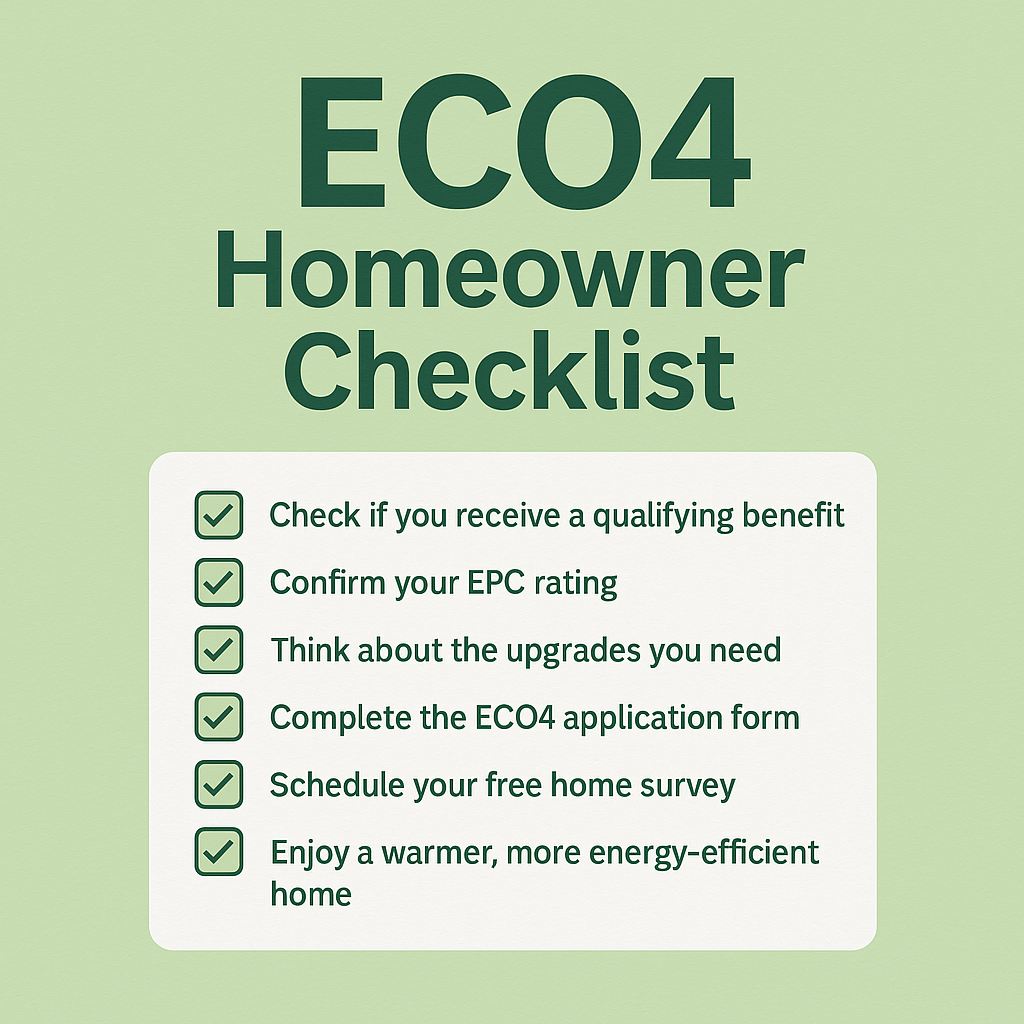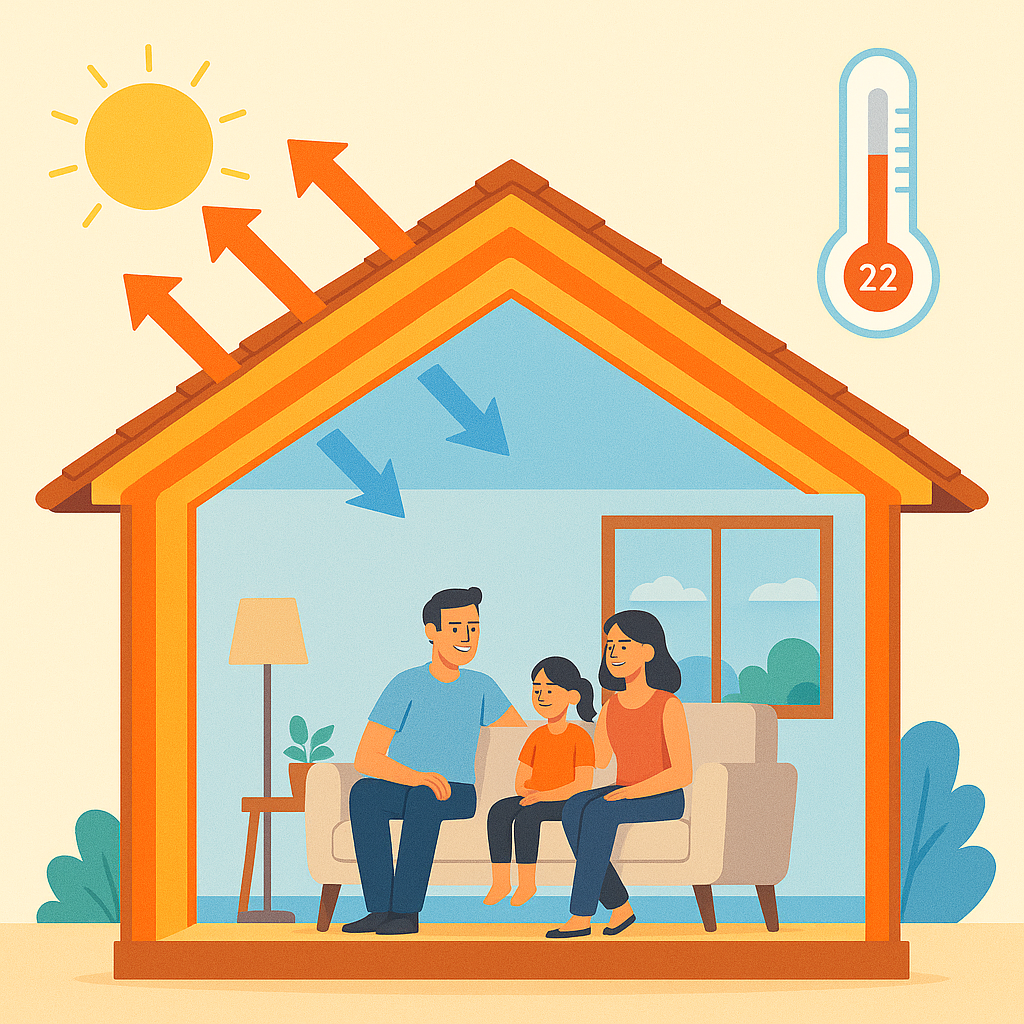Loft insulation is a valuable long term investment to keep your house warm and save money in the long run. This extensive guide will help you discover everything you need to know about loft insulation and its benefits, as well as provide guidance on how you can get a free government grant to help you cut your energy costs.

What is loft insulation?
Loft insulation is a barrier of material in your roof space that traps heat. It is typically either laid between the joists (the horizontal beams along the floor of your attic) or the rafters (the angled beams that support the roof).
Insulation will warm your home throughout the winter but also keep it cool in summer. Insulation between the joists keeps warmth in your living space below, and creates a cold loft, while insulation in the rafters allows you to keep warmth in the roof space as well.
What are the benefits of loft insulation?
When you invest in loft insulation, you can expect to see a number of benefits. These include:
Heat loss prevention
Ultimately, loft insulation is highly effective in preventing heat loss. For uninsulated homes, up to 25% of the heat loss is through the roof. By having professionally installed loft insulation, you can help significantly reduce this heat loss figure, making your home much more energy efficient. You’ll soon start to appreciate the benefits of a warmer house – you’ll feel much healthier than you would living in a cold, damp environment and also rest assured that you’re saving money on your energy bills, which we’ll discuss in more detail below.
Save money on your bills
With better insulation, you’ll notice that you won’t have to spend as much money trying to heat your house.
According to the Energy Saving Trust, you can save money on your energy bills by as much as £395 per year.
● Detached house – £395
● Semi-detached house – £300
● Mid-terrace house – £285
● Detached bungalow – £375
Environmentally friendly
We should be doing everything in our power to help combat climate change. As loft insulation will lead to your home using considerably less energy, you will have a lower environmental impact.
What’s more is that there is now a whole range of eco-friendly loft insulation products available. From natural hemp and recycled plastic to sheep wool, you’ll be able to choose from a variety of sustainable insulating materials with different benefits.
Reduce wear and tear on your boiler
Your boiler will last longer when you’re not using it as much. With loft insulation, you will be using it to heat your home much less often, so this is a great way to reduce wear and tear. You can expect to save money on future boiler repairs, maintenance and replacement – it’s also less likely to break down at the first sign of strain.
Increase your property value
By having good loft insulation installed in your house, you should be able to increase your home’s value. The house will appear much more attractive to potential buyers as there will be less work for them to do. You will also increase your home’s EPC (Energy Performance Certificate).
A study by the Department of Energy and Climate Change found that a home’s value could increase by up to 14% by making energy saving improvements. Loft insulation is a great place to start making these changes.
Noise reduction
In general, home insulation can provide some relief from noise pollution and reduce the amount of noise that makes it into your home. This could involve traffic, children playing on the street, dogs barking, construction work and many other disruptive sounds.
Once your loft is properly insulated, you should be able to notice a reduction in the outside noise, especially when it comes to the upper floor of your house.
Improves your health
Some lofts are poorly insulated and the flooring is laid in the wrong way. This can be the cause of dampness and condensation. This can then create a mould which, along with dampness, means you’re more likely to have respiratory problems – something you’ll want to avoid.
Correct loft insulation will reduce these issues and ensure you stay as healthy and comfortable as possible in your home.
Different types of loft insulation
You’ll find many different types of loft insulation available on the market. Remember, you should always look for the R-value, which is the measurement of how well an insulating material resists heat flow. The higher the R-value, the better the insulation. Here’s a few of the most common types of loft insulation you’re likely to come across:
Mineral wool
Mineral wool is made up of yarn, spun from glass wool (melted wool) or rock wool (melted stone). The yarn is formed into a fibrous matting which commonly comes in large rolls, or “batts”, before it’s rolled into the space between loft joists. The loose yarn can also be blown into hollow spaces.
Benefits:
● Good at conducting heat
● Good for soundproofing
● Cheaper than other types of insulation
● Not flammable
● Long-term solution
● Immune to mould because it doesn’t absorb moisture
● 100% recyclable
● Minimal carbon footprint
● Can be used in lots of different ways
Sheep’s wool
For insulation that’s 100% natural, sheep’s wool is the ideal material. The wool is usually formed into rolls, but can also be bought as large tiles, and makes a very popular insulation method.
Benefits:
● Good for insulating from both heat and sound
● Good at holding onto heat
● Safe and easy to process
● Doesn’t cause irritation
● 100% sustainable material
● 100% recyclable
● Not flammable
● Doesn’t absorb moisture, so immune to mould
● Good air-purifying properties
Spray loft insulation
Spray foam will be installed by a professional, who’ll mix the product once on site at your home. When mixed, a chemical reaction results in a thick liquid foam which is sprayed out with a special applicator. The foam expands quickly to fill gaps and hardens into a dense blanket.
Benefits:
● Good heat and sound insulation
● Immune to mould, mildew, and bacteria
● Creates an airtight seal
● A very long lifespan
● Quick to install
● Some spray foams are eco-friendly, with no toxic emissions
DIY loft insulation
If your loft is easy to access, does not have damp problems and is not a flat roof, you could probably insulate it yourself. In cases where there are damp problems or a more complex insulation system is needed, a professional installer should be used.
Flat roof insulation always requires professional insulation and damp roofs require professional assessment before work can be carried out.
Are you eligible for a loft insulation grant?
At UK Energy Management, we can help you find out whether you’re eligible for a loft insulation graft. Receiving income-based benefits or tax credits? Homeowner or private tenant? Struggling to make ends meet as fuel prices and the cost of living keep rising? Are you a pensioner? Well, you may be eligible for a free loft insulation grant.
Government scheme
With so much heat being lost through your roof due to inadequate or missing insulation, the government’s free loft insulation scheme is intended to help people just like you to save on energy bills, reduce their impact on the environment and keep their homes in a cosy and liveable condition.
Introduced in April of 2022, the ECO4 scheme has replaced previous government-backed initiatives, such as ECO3. This scheme aims to support low-income households by providing them with low-cost, high-efficiency heating and insulation solutions.
After all, an energy-efficient home is much cheaper to heat, leading to a more comfortable living environment and a greatly improved quality of life.
Eligibility criteria
There have been some changes to past eligibility criteria, with disability benefits no longer on the list. Check out the full criteria for ECO4 funding below:
● Income based Jobseekers allowance (JSA)
● Income related Employment & Support Allowance
● (ESA) Income Support (IS)
● Pension Credit Guarantee Credit
● Working Tax Credit (WTC)
● Child Tax Credits (CTC)
● Universal Credit (UC)
● Housing Benefit (new eligible benefit under ECO4)
● Pension Credit Savings Credit (new eligible benefit under ECO4)
Don’t miss out on this opportunity to save money – apply for a government funded loft insulation by contacting us today.



